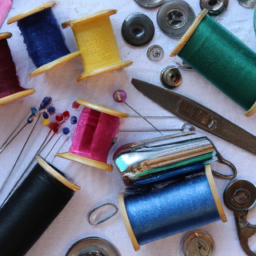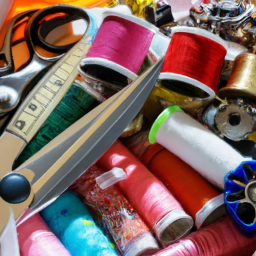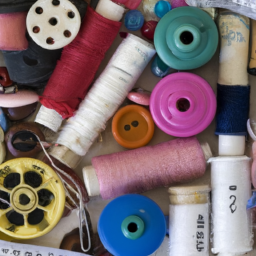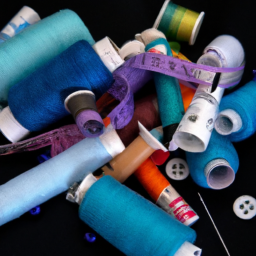
Materials for Sewing Wedding Gown
Designing your dream wedding gown is an exciting and personal endeavor. To create a gown that perfectly fits your style and personality, carefully selecting the materials is crucial. From luxurious fabrics to delicate embellishments, every element plays a significant role in bringing your vision to life. Here are some essential materials to consider when sewing your wedding gown:
1. Fabric
The type of fabric you choose sets the overall tone and look of your gown. Opt for high-quality materials that drape gracefully and feel comfortable against your skin. Popular fabric choices for wedding gowns include:
- Silk satin: Known for its luxurious sheen and smooth texture, silk satin adds an elegant touch to any gown.
- Lace: Delicate and feminine, lace brings a romantic and timeless element to a wedding gown.
- Tulle: Often used for creating voluminous skirts and beautiful layers, tulle adds a whimsical and ethereal feel to a gown.
- Organza: Sheer and lightweight, organza is excellent for creating dramatic ruffles and elaborate details.
2. Embellishments
Embellishments can elevate your wedding gown and add a touch of glamour. When selecting embellishments, consider the overall style of your gown and the level of detail you desire. Some popular options include:
- Crystals and beads: These sparkling adornments can be subtly scattered or intricately hand-sewn for a dazzling effect.
- Embroidery: Intricate embroidery can create breathtaking patterns and designs on your gown, adding a unique and personalized touch.
- Sequins: Perfect for adding a touch of glamour, sequins can be scattered throughout the gown or used in specific areas for an eye-catching effect.
- Feathers: For those looking to make a bold statement, incorporating feathers can add a dramatic and unique element to the gown.
3. Lining and Interfacing
The choice of lining and interfacing materials is crucial to ensure the perfect fit, comfort, and structure of your wedding gown. Lining is used to add opacity and a smooth finish to the inside of the gown, while interfacing provides support and shape. Consider using materials such as silk or satin for lining and a medium to heavyweight interfacing, depending on the desired structure of your gown.
4. Fastenings
Choosing the right fastenings for your gown ensures a secure and comfortable fit. Common fastening options include:
- Zipper: A classic choice that provides a neat and invisible closure.
- Lacing: A romantic option that allows for adjustments and creates a beautiful corset-like effect.
- Buttons: Perfect for adding a touch of vintage charm, buttons can be used as a decorative element or as functional closures.
Remember, each bride’s vision is unique, so feel free to mix and match different materials to create a wedding gown that truly reflects your personal style and dreams. Paying attention to the quality, texture, and details of the materials you choose will ensure a gown that you’ll cherish forever. Happy sewing!




